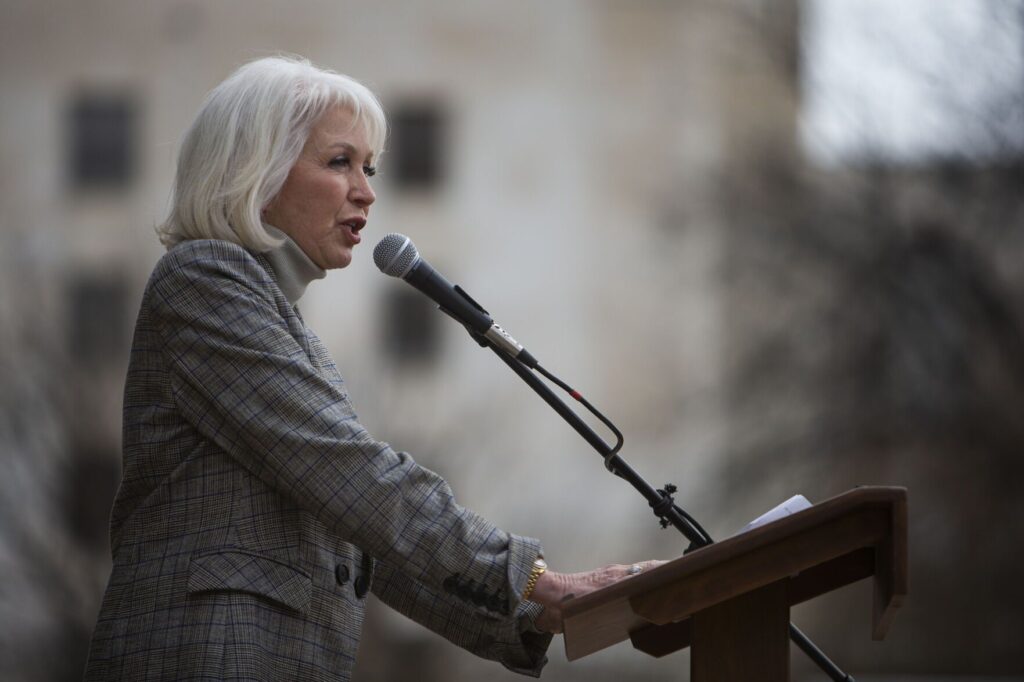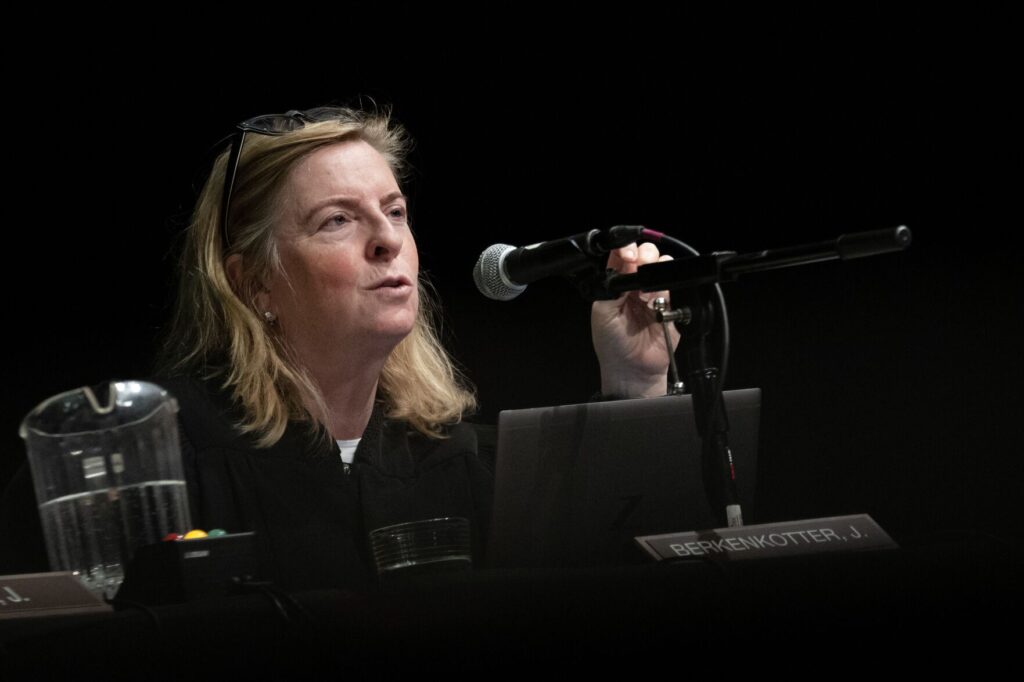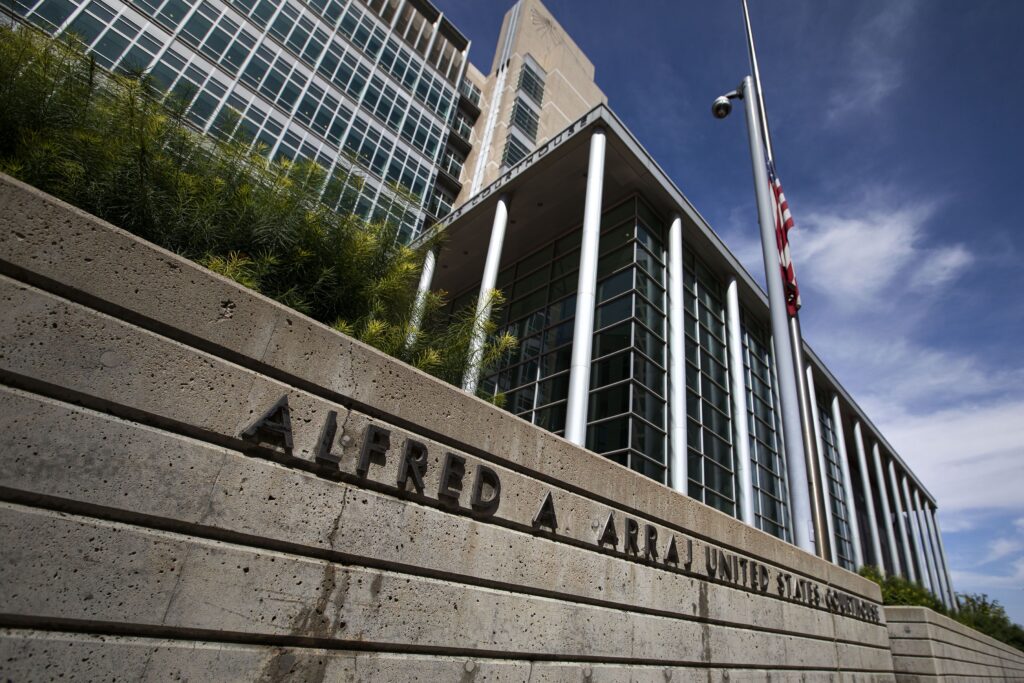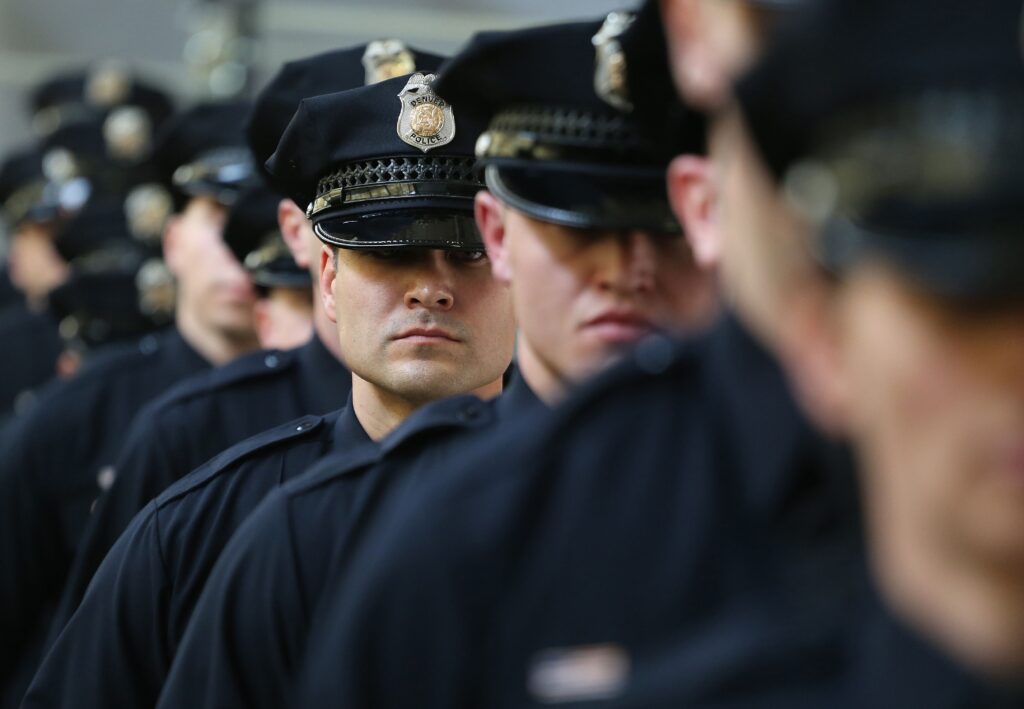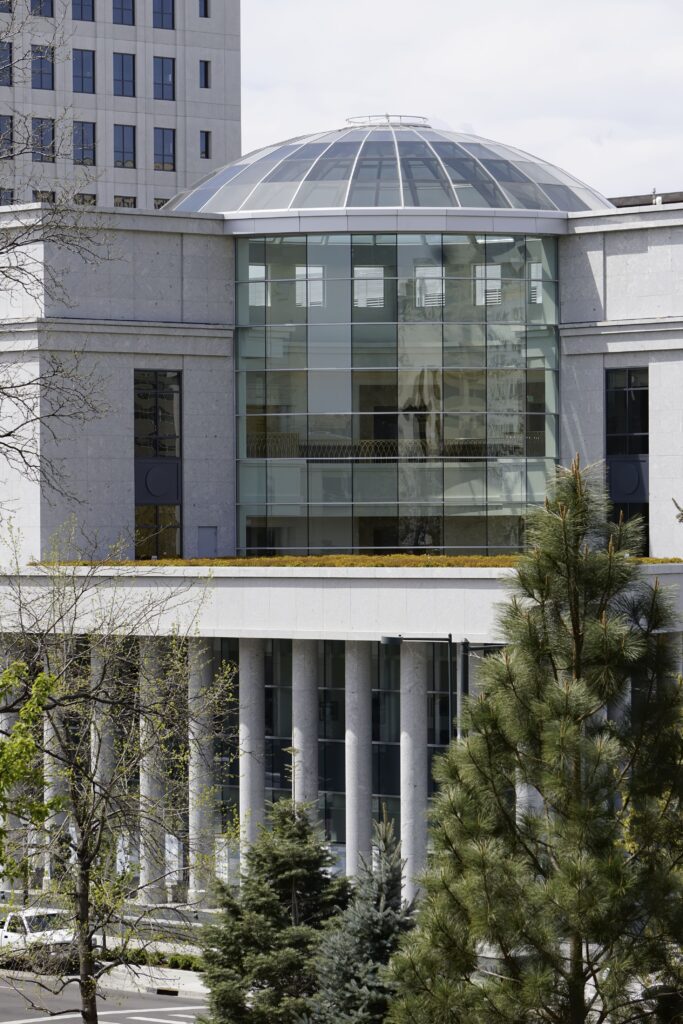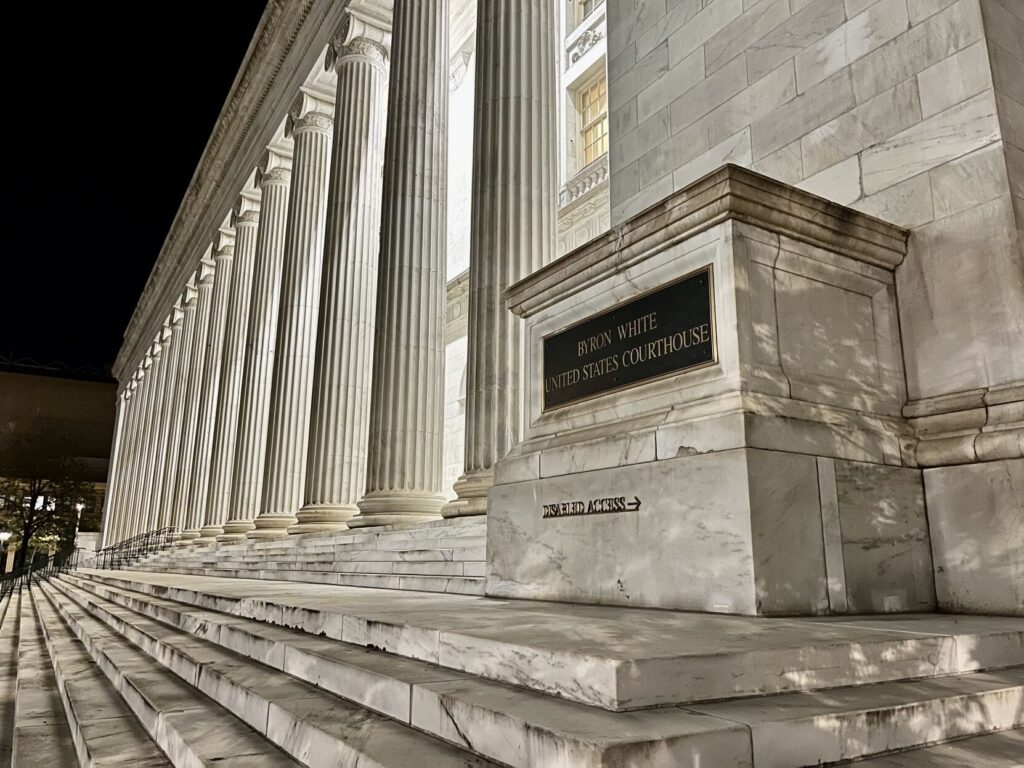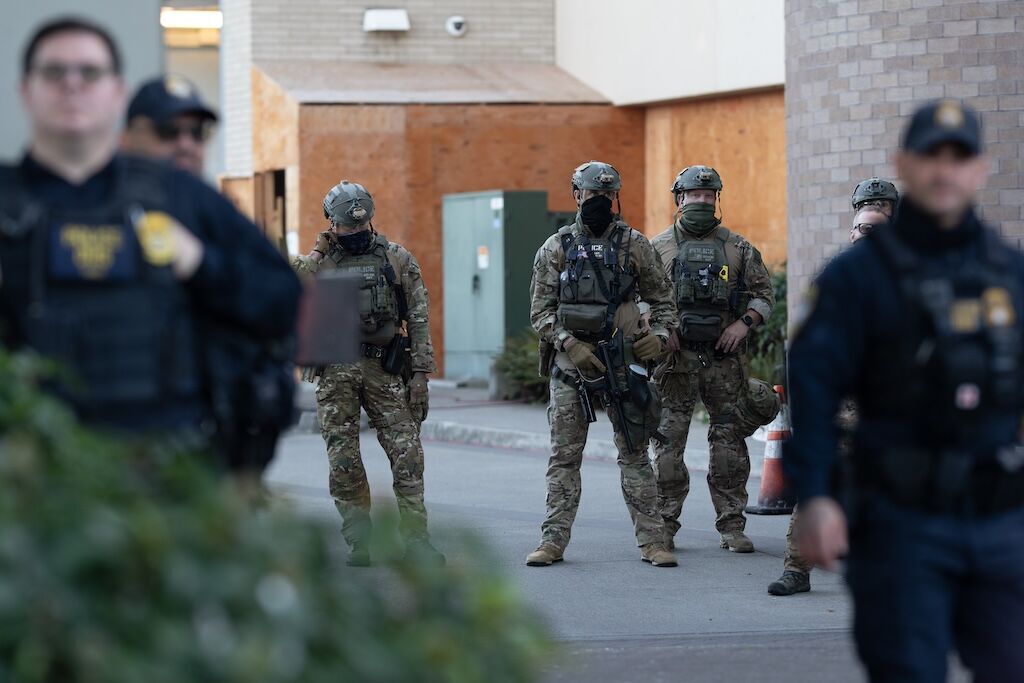Q&A with Chief Judge Timothy Tymkovich | 10th Circuit’s top judge discusses changes, confirmation process, pandemic
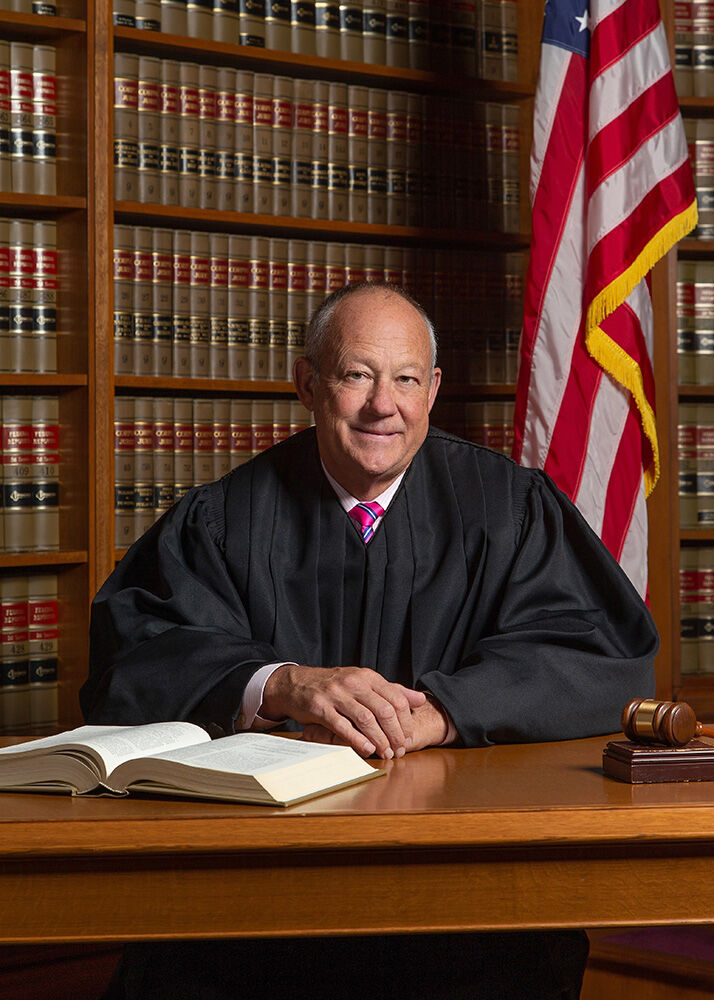
FAST FACTS:
- Timothy M. Tymkovich began a seven-year term in October 2015 as chief judge of the U.S. Court of Appeals for the 10th Circuit based in Denver
- A nominee of President George W. Bush, the U.S. Senate confirmed him to the appeals court in 2003
- Tymkovich was the solicitor general of Colorado between 1991 and 1996 under Republican Attorney General Gale Norton
- Among the cases Tymkovich handled as solicitor general, he defended Amendment 2 before the U.S. Supreme Court, which voters enacted in 1992 to ban the state and local governments from establishing LGBTQ protections
- By nature of his position as chief judge, he is a member of the Judicial Conference of the United States, which is the policymaking body for the federal courts
BONUS FACTS ABOUT THE 10TH CIRCUIT:
- The 10th Circuit hears appeals of federal cases arising from Colorado, Oklahoma, Utah, Kansas, New Mexico and Wyoming
- There are 12 active, Senate-confirmed judgeships on the court, plus senior (semi-retired) judges. Each state has two seats, with the exception of Colorado, which has three, and Wyoming, which has one
- In the year prior to the COVID-19 pandemic, there were 1,488 appeals filed in the circuit, amounting to 4% of the total appeals across all federal circuit courts
- Most appeals terminate at the circuit level, given the relatively few cases the U.S. Supreme Court agrees to hear each term
Colorado Politics: We are talking in January in a week when the 10th Circuit is holding oral arguments. Can you walk through what the judges are doing during oral arguments in the courthouse versus what they do when they are back in their home states? And can you contrast that with how things were before the COVID-19 pandemic?
Tymkovich: This is our January term of court and we are not holding in-person oral arguments this week. That’s the big change, and we’ve not had in-person oral argument for a year-and-a-half now. The federal courts have really adapted and adjusted quite favorably to the pandemic, and appellate courts have an ability more than a lot of organizations to work remotely though technology.
The practice for the 10th Circuit is to have all of our judges come to Denver for oral argument week and we sit in three-judge panels every day of the week and rotate the judges among ourselves. Nobody’s here – and I may sit in a courtroom on Friday for my oral argument just for the atmosphere of it – but most of our judges are sitting at home or in their chambers in their respective 10th Circuit states.
It’s been surprisingly seamless. And after we hear the oral argument we have a separate interactive call with the judges to discuss the cases and the proposed disposition of each case. Pre-COVID, obviously, all of that would be in person. I regret there’s many of my colleagues I haven’t seen in almost two years, and that human personal dynamic is something I miss and many other institutions probably feel that way.
The judicial project benefits through the give and take that’s more productive in person. I miss my colleagues. We’ve all become friends since we’ve been on the court, and the chance not to socialize with them in Denver has been probably the biggest drawback of the pandemic. We frequently have receptions with judges and private dinners with speakers from time to time. All of those interactions have been put on hold.
CP: To the workload of the court, you’ve had a vacancy from Kansas going on one year now. How is that affecting the ability to hear and decide cases?
Tymkovich: Judge [Mary] Briscoe went senior status almost a year ago and I’m not aware of a nominee either. Judge Briscoe has maintained a full caseload, so from the inside, there’s really not been a workload impact yet. If she chooses to take fewer cases, which she’s entitled to as a senior judge, it may have an effect in the future.
Some of our case filings are down during the pandemic. There have been fewer federal criminal trials and civil trials. Our work comes to us, so because of the declines at the district court level, we have fewer appeals. Our case filings are down about 20%, but I expect them to go back up again as we emerge from the pandemic.
A lot of us believe we’re going to get a much larger number of cases from the Northern District and Eastern District of Oklahoma because of the increased federal workload arising from the Supreme Court’s McGirt decision, which expanded federal jurisdiction over a lot of the tribal matters in that state.
CP: Relative to other circuits, you also have fewer en banc hearings, which is when all the active judges sit together to hear a case. Can you describe your understanding of why that is? Why you only have a handful of en banc cases compared to, say, the Ninth Circuit [which encompasses the entire West Coast] or the Fifth Circuit [which centers around Texas]?
Tymkovich: I’ve been on the court for almost 20 years now and throughout that entire tenure, we’ve had a culture that disfavors en banc proceedings. We only do them when we think there’s truly an important case and a lot of the judges believe that even if they disagree with the outcome of a case, they respect the decision-making process and the thought that goes into them.
Internally, every opinion is circulated to every member of the court prior to the filing of the opinion. So even judges who aren’t on the panel for a particular case do have the chance to review a decision. We invite comments from colleagues who aren’t on the panel and colleagues frequently do comment. Through that process, disagreements can be anticipated or discovered, and there might be ways to accommodate concerns about a particular case.
CP: What are the differences in the types of cases you’re seeing now? Are you seeing more or fewer of a specific type than in the early 2000s?
Tymkovich: The answer is clearly yes. When I first came onto the court in 2003, the Supreme Court had just issued a decision that reformed the way courts approached the federal sentencing guidelines. And that generated hundreds of criminal sentencing appeals –
CP: Which decision was that?
Tymkovich: That was United States v. Booker. When I came on the court, that was probably the biggest percentage of cases I saw. I think in my early days, also, we had a large number of immigration and habeas corpus appeals. I think those have declined over the years because the 10th Circuit’s caselaw has become clearer. There’s fewer appeals because there are fewer opportunities to make new arguments.
Over the last couple of years, even with the decline in overall filings, I think I’ve seen an uptick in civil rights cases – excessive force, employment discrimination and the like. Even though immigration cases are below where they were 20 years ago, there has been a little uptick recently. There are a lot of asylum cases in the pipeline.
CP: Do you have a theory about why there is an upswing in civil rights cases?
Tymkovich: I think there is a greater awareness among potential plaintiffs, maybe more sensitivity to their rights and a belief they have a solid case. Like in the other areas, I think our caselaw has evolved over 20 years. Overall, if you think you have a good civil rights case, a good lawyer can look at the facts and really compare that to what winning cases look like in the circuit.
So maybe it’s a more sophistical plaintiff’s bar and a more sophisticated class of potential plaintiffs that has a better understanding of their rights. I’m kind of speculating, as I haven’t seen any data.

CP: Speaking of things that are different than 20 years ago: thinking back to your confirmation process, when you’ve seen circuit judges join the court from the Obama administration through to the present day, are you noticing any differences in how they are coming through the Senate compared to your own experience?
Tymkovich: I’m not a big fan of the present confirmation process. I think that there must be a better way to build a process.
I went through in 2003 and that was a contentious era – although really since the early ’90s, post-Robert Bork, the Supreme Court confirmation process has been contentious. And that has trickled down to the circuit level and the district court level. The very day that I had my hearing in the Senate, one of the other nominees for the D.C. Circuit, Miguel Estrada, was filibustered on the floor of the Senate, and his nomination did not go forward.
I think the senators and the Justice Department and the White House have really done great favors to the 10th Circuit with the quality of our nominees. When I went through, you pretty much had to reach a 60-vote threshold, and that’s completely changed over the last six or seven years. I think you see more oppositional votes than you used to, I don’t think necessarily based on the quality of the nominee.
It’s just become a little more difficult for the nominees year after year after year.
CP: During the 2016 presidential campaign, your name appeared on Donald Trump’s list of potential U.S. Supreme Court nominees. How did you feel about that?
Tymkovich: Well, Neil Gorsuch [former 10th Circuit judge and current Supreme Court justice] was there and it happened for him against all odds. I didn’t have any advance notice of that and don’t think in retrospect it really meant much. Who knows how judges made it on that list, but anyway, it didn’t affect the way I approached my job or my cases.
CP: I can see how on the one hand it’s obviously a tremendous honor to be recognized as a candidate for the very prestigious job of Supreme Court justice. I can also see how a judge might feel uneasy with their name being used in the context of a political campaign, and being identified with one candidate might implicate how others view that judge’s impartiality. Is that a valid critique?
Tymkovich: I don’t think so. I think one of the continuing strengths of the judiciary is our commitment to impartiality and the rule of law. That might sound like high rhetoric, but if you travel the world it’s still what people look to as the United States federal judiciary’s core strength.
We also have a strong conflict of interest policy and code of conduct that regulate our political activity and we reveal our financial holdings through annual reports. Finally, we show our work as a transparent organization. I write an opinion and everybody in the public, in the legal community and the journalistic community can review our opinions and work and judge for himself or herself.
CP: You mentioned your former colleague, Justice Neil Gorsuch. Are the two of you still close?
Tymkovich: Yeah, Justice Gorsuch is a friend. I miss him on the 10th Circuit but he’s moved on to a different building.
CP: You probably saw the NPR story recently about the Supreme Court’s oral arguments where the chief justice apparently asked all the members of the Court to wear masks and Justice Gorsuch did not do that, forcing Justice Sonia Sotomayor to participate remotely. What’s your reaction to that?
Tymkovich: I didn’t see the NPR story. I think I’m generally aware of the story and I really don’t have any comment on that right now. I’ll wait and see if there are additional facts.
[Editor’s note: NPR later clarified that Chief Justice John G. Roberts Jr. “suggested” mask wearing, rather than requested it.]

CP: You are almost at the end of your seven-year term as chief judge. What does the succession plan look like?
Tymkovich: Well, the chief judge of the circuit is really a job that’s regulated by federal law. The rule is a judge who is under the age of 65 and is the most senior active judge is next in line to become chief judge. You don’t have to, and there’s many judges that have declined to become chief judges around the country.
It’s a bit of a random and unpredictable succession process, but next in line is Judge Jerome Holmes, who’s an active judge in Oklahoma City. He’ll be eligible in next October.
CP: October of this year?
Tymkovich: Yes. Unlike my friends over at the Colorado Supreme Court, we don’t have a vote on it and it’s not a popularity contest.
I’ve really enjoyed it, to tell you the truth. I’ve had experience in running large legal organizations over my career. I had a number of committee assignments as a judge, and I’ve been a contributor to the governance system of the federal judiciary, which was pretty good training for the types of issued I’ve faced as a chief judge: budget, management, personnel, workplace conduct.
CP: I just want to clarify, is Judge Holmes going to be the next chief judge?
Tymkovich: I hope so. You’ll have to ask him! Yes, I fully expect he’ll become the next chief.
CP: Can you think of the thing you’re most proud of accomplishing during your term as chief, and the thing you would change if you had a do-over?
Tymkovich: I was lucky to inherit a very well-functioning court with an executive leadership that operates at a very high level. So my predecessors have been very good managers. I’ve tried to be a continuation of my predecessors.
I still believe we have one of the most respected and collegial circuits in the country. I feel that probably in retrospect, the pandemic response and the way we’ve managed to upgrade our technology to allow a hybrid method of deciding cases and hearing cases is going to be a long-term benefit for us.
I’m also pleased with the way we’ve improved our overall codes of conduct and expanded the scope.
And then finally, I’ve had some real challenges over the last year-and-a-half in working with my colleagues in Oklahoma in responding to the incredible workload increases from the McGirt decision-
CP: These are the district court judges?
Tymkovich: Yeah, the district court there is seeing case filing numbers that exceed the Southern District of New York. As chief, trying to get them the resources and help they need has been a great challenge.
We’ve also improved our infrastructure. The Byron White Courthouse in Denver, we had to make some expansions to fit in our new judges. We have more judges from around the circuit because of senior status, and we accommodate them. It’s nice to be sitting in Denver. I’m the first chief judge from Colorado in 50, 60 years, so it’s nice to be in Denver with my leadership team.
CP: I didn’t hear you mention a do-over. Does anything come to mind?
Tymkovich: I wish I would have upgraded our technology sooner. We had to scramble when the pandemic brought us to a halt.
I do regret – like I said, there’s nothing we can do about this – not being able to meet with my colleagues in person. There was kind of a sweet spot in June. Maybe we should have had a judges’ conference.
CP: Along the lines of technology, you all live stream your oral arguments over an audio feed. That is more than what the federal trial courts do, but it’s also less than what the state appellate courts do. They have video streaming and archiving on YouTube. How close is the 10th Circuit to getting cameras in the courtroom?
Tymkovich: We have upgraded our four courtrooms in Denver during the pandemic. So when we go back in person, we do have the technological capacity to provide more access to the public. I think we’ve been cautious over the years on our approach to that, but in the last 10 years, we’ve gone from no audio or video access, to audio access, and probably the next step would be access through a live feed or video.
That will be one of the topics on my next meeting with my judges. I’d like to have that conversation in person, but certainly we’ve thought about expanding that opportunity to the public, especially since the pandemic has proved we have the technology.
Many of my colleagues have sat on the Ninth Circuit by designation, which has live streaming. A lot of us are used to that now. And on my court, we have Judge [Allison] Eid, Judge [Nancy] Moritz, Judge [Carolyn] McHugh – all come from state court environments, many of which had cameras in the courtroom their entire tenure.
Colorado was one of the early innovators for cameras in the courtroom, and if you remember Court TV, I actually had a case where – I think our case was either the first or the second that was ever broadcast live on Court TV for a week or so.
CP: Do you still have the VHS tape?
Tymkovich: I never saw it. It was the case that became Romer v. Evans [challenging Colorado’s Amendment 2 ban on LGBTQ protections] and went all the way to the Supreme Court.
CP: So it sounds like the 10th Circuit is not imminently going to join the Ninth, but you have a critical mass of judges who thinks video is no big deal, and so it’s only a matter of time.
Tymkovich: I think that’s fair.



